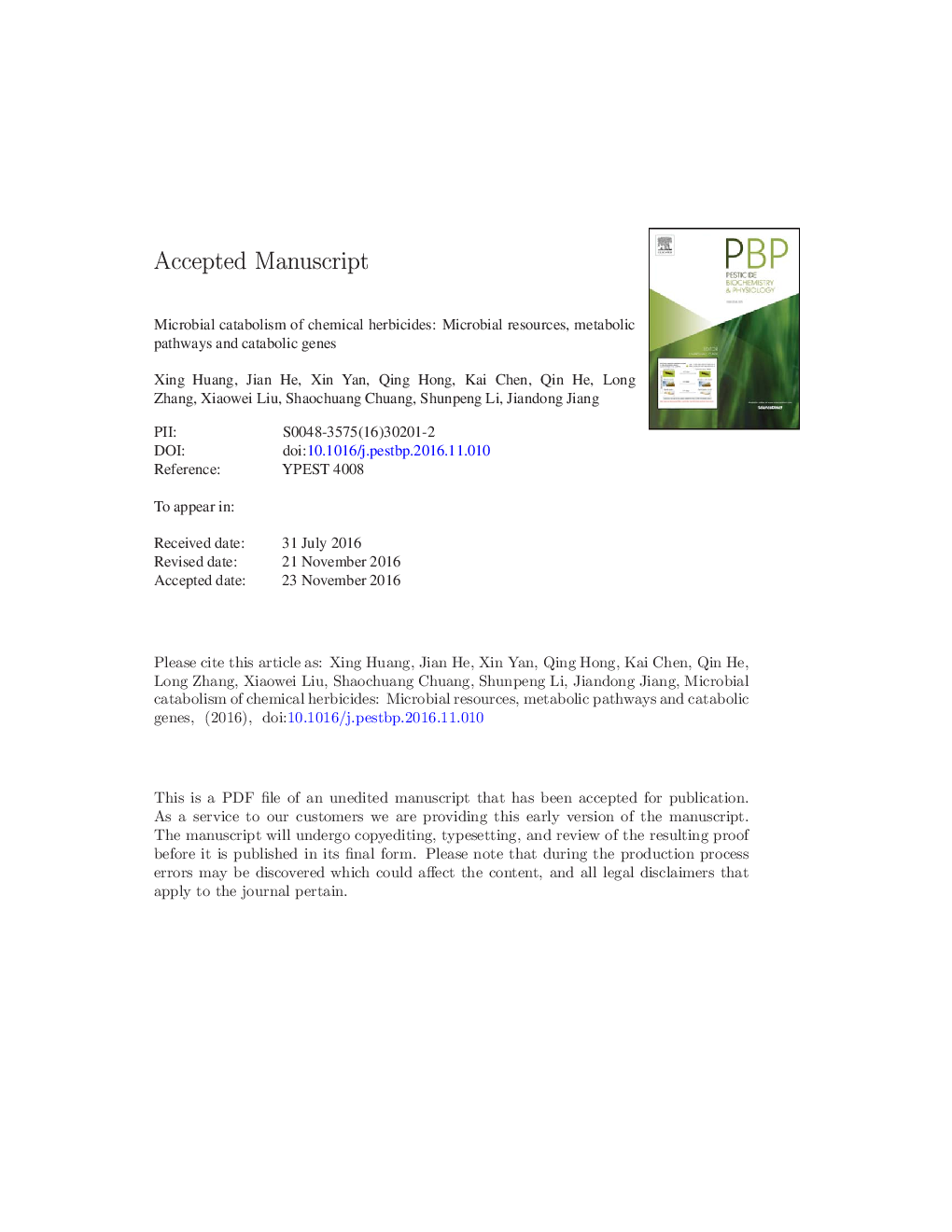| Article ID | Journal | Published Year | Pages | File Type |
|---|---|---|---|---|
| 8349260 | Pesticide Biochemistry and Physiology | 2017 | 69 Pages |
Abstract
Chemical herbicides are widely used to control weeds and are frequently detected as contaminants in the environment. Due to their toxicity, the environmental fate of herbicides is of great concern. Microbial catabolism is considered the major pathway for the dissipation of herbicides in the environment. In recent decades, there have been an increasing number of reports on the catabolism of various herbicides by microorganisms. This review presents an overview of the recent advances in the microbial catabolism of various herbicides, including phenoxyacetic acid, chlorinated benzoic acid, diphenyl ether, tetra-substituted benzene, sulfonamide, imidazolinone, aryloxyphenoxypropionate, phenylurea, dinitroaniline, s-triazine, chloroacetanilide, organophosphorus, thiocarbamate, trazinone, triketone, pyrimidinylthiobenzoate, benzonitrile, isoxazole and bipyridinium herbicides. This review highlights the microbial resources that are capable of catabolizing these herbicides and the mechanisms involved in the catabolism. Furthermore, the application of herbicide-degrading strains to clean up herbicide-contaminated sites and the construction of genetically modified herbicide-resistant crops are discussed.
Keywords
MEAMNBA4-isopropylanilineEPTCAHASIPUIFTFenoxaprop-ethyldCMPGATAMPAESAMCPAHPPDEAGSTTHF2,4-D2,4-dichlorophenoxyacetic acidAOPPsN-acetyltransferaseDESacetohydroxyacid synthaseacetolactate synthase2-methyl-4-chlorophenoxyacetic acidaminomethylphosphonic acidAmbaIsoxaflutoleIsoproturonALStetrahydrofolateBiodegradationPhenylurea herbicidesHerbicidesMetabolic pathwayHydroquinoneglutathione-S-transferaseGlyphosate
Related Topics
Life Sciences
Agricultural and Biological Sciences
Agronomy and Crop Science
Authors
Xing Huang, Jian He, Xin Yan, Qing Hong, Kai Chen, Qin He, Long Zhang, Xiaowei Liu, Shaochuang Chuang, Shunpeng Li, Jiandong Jiang,
